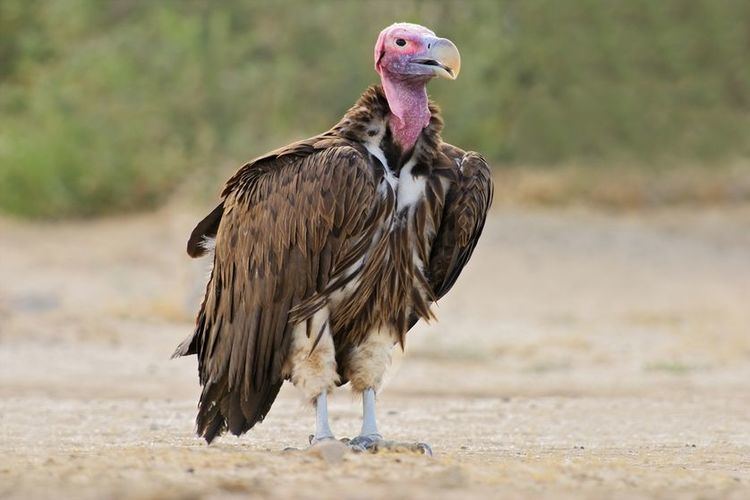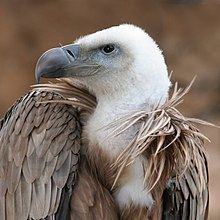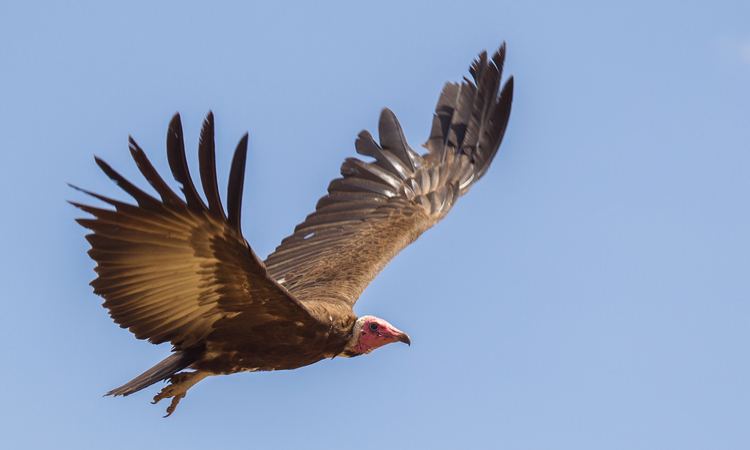Class Aves | Phylum Chordata Clutch size Black vulture: 1 – 3 | |
 | ||
Mass Griffon vulture: 6.5 – 11 kg, Black vulture: 1.2 – 1.9 kg, Andean condor: 7.7 – 15 kg, Red-headed vulture: 3.5 – 6.3 kg Wingspan Griffon vulture: 2.3 – 2.8 m, Black vulture: 1.3 – 1.7 m, Red-headed vulture: 2 – 2.6 m Length Griffon vulture: 93 – 120 cm, Black vulture: 56 – 74 cm, Andean condor: 100 – 130 cm, Red-headed vulture: 76 – 86 cm Representative species | ||
King vultures national geographic
Vulture is the name given to two groups of scavenging birds of prey: the New World vultures, including the Californian and Andean condors, and the Old World vultures, including the birds that are seen scavenging on carcasses of dead animals on African plains. Some traditional Old World vultures (including the bearded vulture) are not closely related to the others, which is why the vultures are to be subdivided into three taxa rather than two. New World vultures are found in North and South America; Old World vultures are found in Europe, Africa, and Asia, meaning that between the two groups, vultures are found on every continent except Australia and Antarctica.
Contents
- King vultures national geographic
- Vultures photographing the antiheroes of our ecosystems exposure
- Old World vultures
- New World vultures
- Feeding
- Status
- References

A particular characteristic of many vultures is a bald head, devoid of normal feathers. Although it has been historically believed to help keep the head clean when feeding, the bare skin may play an important role in thermoregulation. Vultures have been observed to hunch their bodies and tuck in their heads in the cold, and open their wings and stretch their necks in the heat.

A group of vultures is called a wake, committee, kettle, venue, or volt. The term kettle refers to vultures in flight, while committee refers to vultures resting in trees. Wake is reserved for a group of vultures that are feeding. The word Geier (taken from the German language) does not have a precise meaning in ornithology; it is occasionally used to refer to a vulture in English, as in some poetry.
Vultures photographing the antiheroes of our ecosystems exposure
Old World vultures
The Old World vultures found in Africa, Asia, and Europe belong to the family Accipitridae, which also includes eagles, kites, buzzards, and hawks. Old World vultures find carcasses exclusively by sight.
The 16 species in 9 genera are:
New World vultures
The New World vultures and condors found in warm and temperate areas of the Americas are not closely related to the similar Accipitridae, but belong in the family Cathartidae, which was once considered to be related to the storks. However, recent DNA evidence suggests that they should be included among the Accipitriformes, along with other birds of prey. However, they are still not closely related to the other vultures. Several species have a good sense of smell, unusual for raptors, and are able to smell dead animals from great heights, up to a mile away.
The seven species are:
Feeding
Vultures rarely attack healthy animals, but may kill the wounded or sick. When a carcass has too thick a hide for its beak to open, it waits for a larger scavenger to eat first. Vast numbers have been seen upon battlefields. They gorge themselves when prey is abundant, until their crops bulge, and sit, sleepy or half torpid, to digest their food. These birds do not carry food to their young in their claws, but disgorge it from their crops.
Vultures are of great value as scavengers, especially in hot regions. Vulture stomach acid is exceptionally corrosive, allowing them to safely digest putrid carcasses infected with botulinum toxin, hog cholera bacteria, and anthrax bacteria that would be lethal to other scavengers. New World vultures often vomit when threatened or approached. Contrary to some accounts, they do not "projectile vomit" on their attacker as a deliberate defense, but it does lighten their stomach load to make take-off easier, and the vomited meal residue may distract a predator, allowing the bird to escape.
New World vultures also urinate straight down their legs; the uric acid kills bacteria accumulated from walking through carcasses, and also acts as evaporative cooling.
Status
Vultures in south Asia, mainly in India and Nepal, have declined dramatically since the early 1990s. It has been found that this decline was caused by residues of the veterinary drug Diclofenac in animal carcasses. The government of India has taken very late cognizance of this fact and has banned the drug for animals. However, it may take decades for vultures to come back to their earlier population level, if they ever do: without vultures to pick corpses clean, rabies-carrying dogs have multiplied, feeding on the carrion, and age-old practices like the sky burials of the Parsees are coming to an end, permanently reducing the supply of corpses. The same problem is also seen in Nepal where government has taken some late steps to conserve remaining vultures.
A recent study in 2016, reported that "of the 22 vulture species, nine are critically endangered, three are endangered, four are near threatened, and six are least concern".
